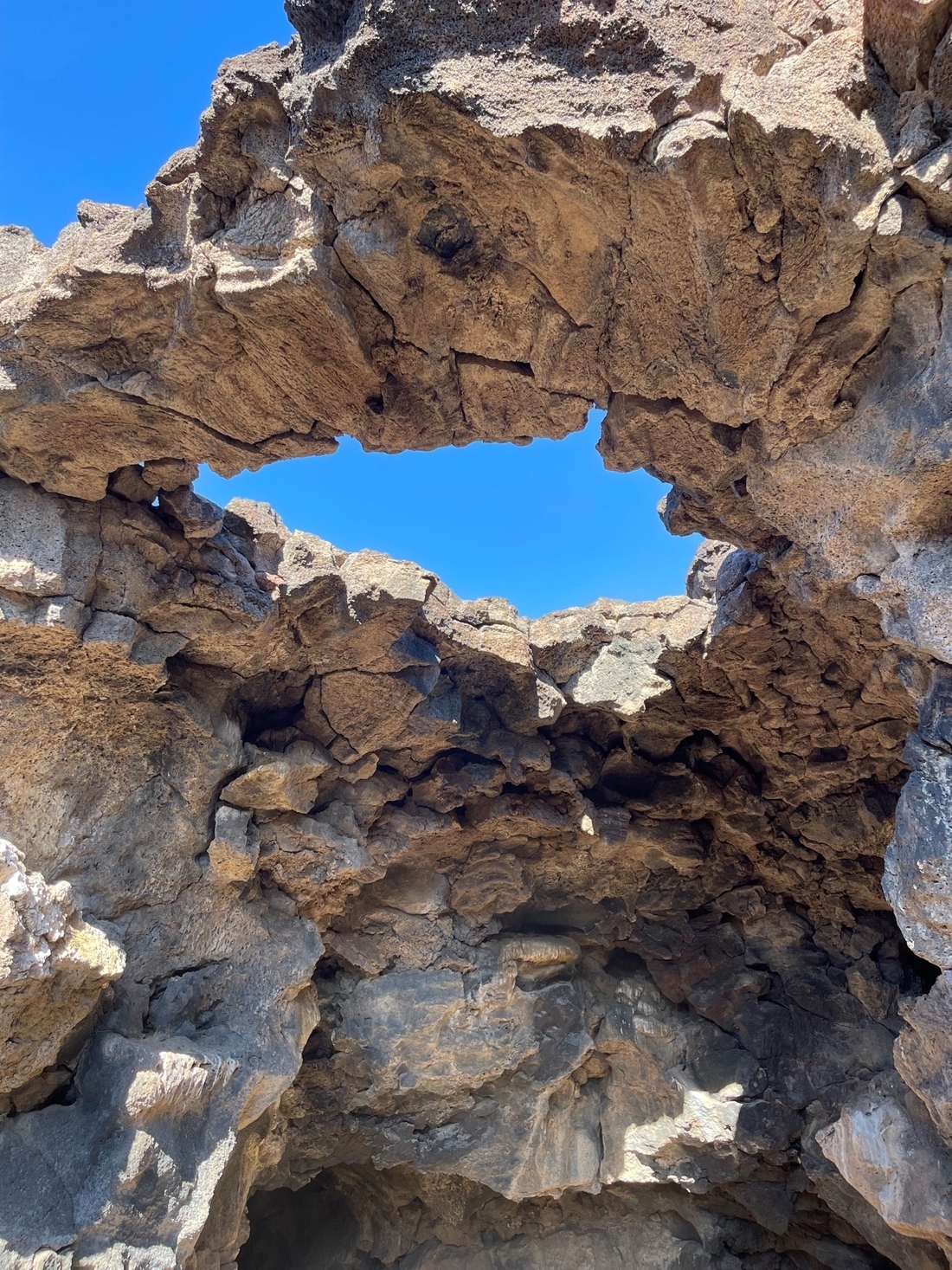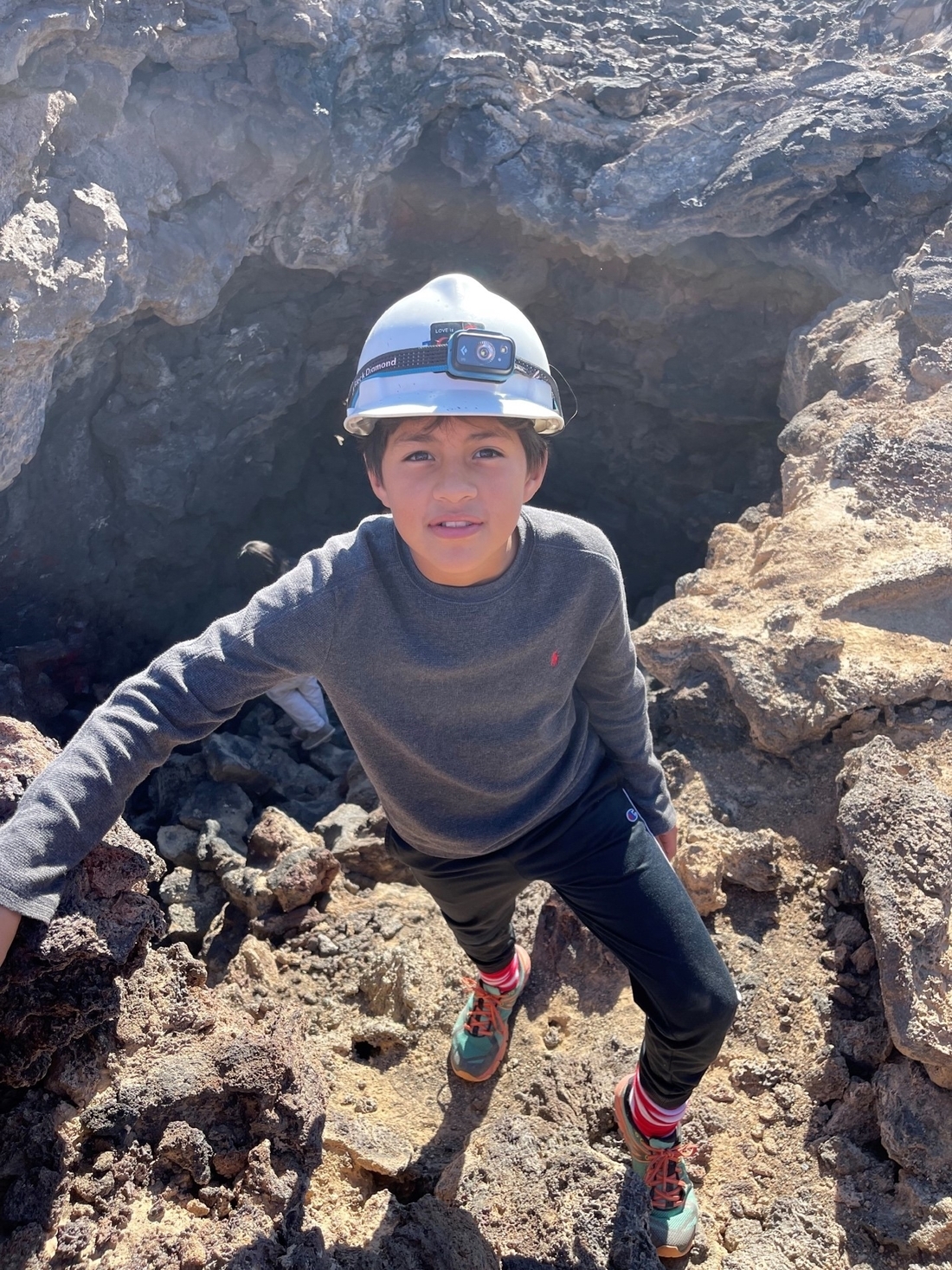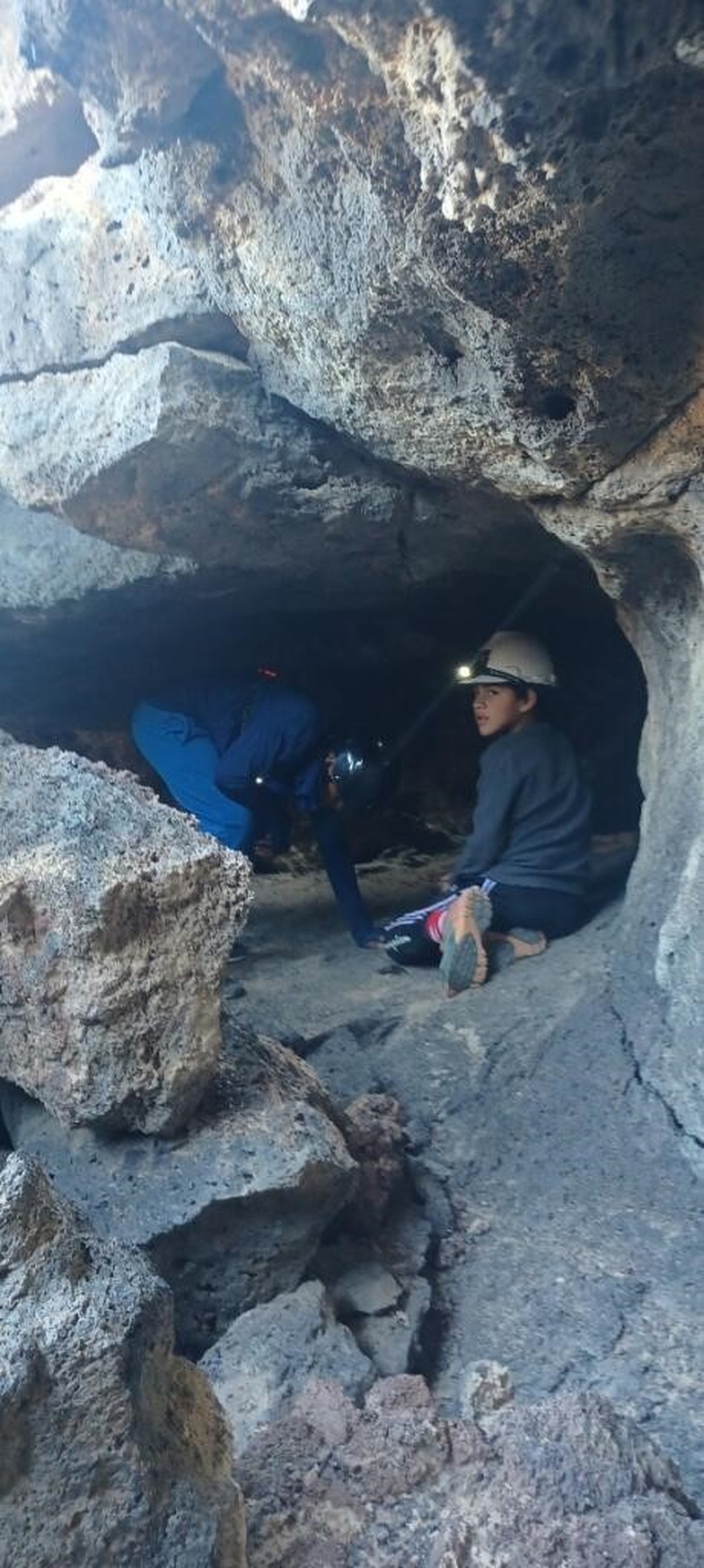Tustin Mazda’s official adventurer Norma Moreno was at it again recently and this time with her wonderful family! They explored the Lava Tubes in Mojave National Preserve near Baker City, CA. Norma’s son Giovanni had a good time and said hew favorite part was “getting in the caves and exploring inside!” It’s awesome to see he loves spending time with his Mom and getting out on adventures just like she does! (check out Norma Summiting Old Greyback)
Check out the awesome images and learn more about the Lava Tubes below!



National Park Service U.S. Department of the Interior Cinder Cones, Lava Flows, and Lava Tube Mojave National Preserve
Introduction Driving across the Mojave Desert on Interstate 15 or Kelbaker Road, visitors might notice a series of peculiar features on the horizon: thirty-two conical mounds of red and black volcanic rocks rise abruptly above the desert landscape. Surrounded by a sea of hardened lava flows, these little volcanos—cinder cones—began erupting into existence 7.6 million years ago. Lava last flowed just 10,000 years ago. Abundant and well preserved, these geologic features were designated as Cinder Cone National Natural Landmark in 1973.
Soda from a Cinder Cone Millions of years ago, fountains of liquid magma erupted through vents in the earth’s crust beneath present-day Mojave National Preserve. Much like the opening of a shaken can of soda pop, hot, pressurized magma spewed skyward. Upon contact with cool air, the magma instantly solidified, preserving the bubbles created by escaping gases. The light, hole-filled rocks, or cinders, accumulated around the vent and formed a cone-shaped hill. When the growing piles of cinders became too steep, avalanches created the roughly 30-degree slopes evident today. Unlike a can of soda pop, which erupts for only a brief moment, the fountains that create cinder cones can last months, or even years. As subterranean pressures decrease and the eruption comes to an end, black basaltic lava may slowly flow from the vent, oozing out across the landscape. Today, basalt formed from such lava flows can be seen among the cinder cones. Most flows are 10 to 13 feet thick, and exhibit both ropy (pahoehoe) and blocky (aa) surfaces.
Recipe for a Volcano Volcanic eruptions don’t occur everywhere. Several “ingredients” must combine at the right place and time. While the geologic complexities of Southern California are still under investigation, many researchers think that faulting, block movement, and associated magma production are key ingredients contributing to the recipe for cinder cones and lava flows in Mojave National Preserve. During the Mesozoic Era (~245-65 million years ago), extensive tectonic activity in western North America resulted in a dynamic period of volcanism and faulting as the Pacific Plate began to slide beneath the North American Plate. Then, around 30 million years ago, great fault systems developed further throughout present-day California. Regional movement of these faults cracked the earth’s crust into blocks. As the plates and blocks of the earth’s crust slide and rotate, they generate friction and tremendous heat. Beneath the Mojave, rocks of the lower crust melted. Because it is less dense than the surrounding rock, the melted, mantle-derived basalt, or magma, rises toward the surface. When magma cannot find a path upwards it pools into magma chambers. These chambers can be huge, providing enough magma for many volcanos over several years. To form a volcano, however, magma must reach the surface. The spaces between fault blocks are zones of weakness reaching down to the mantle. Pressure within magma chambers was released as eruptions through such fractures or vents in the earth’s crust, providing magma with a way up and out. With this final ingredient, a hot and “fresh” volcano is formed.
Flows, Tunnels, & Tubes Not all lava is the same. Very thick, gooey rhyolitic lava doesn’t flow very far. The runny basaltic sort that characterizes some of the lava flows of Mojave National Preserve, however, spreads out as smoothly as hot maple syrup. It flowed from the sides of the cones or pooled near their bases. As the lava streamed out across the land, it slowly began to cool. Often, the top of a flow would cool while liquid lava continued moving underneath, creating a tunnel. When the eruption ended, the flowing lava in the tunnel either cooled in place or emptied out the tunnel’s end, leaving a hollow lava tube. A lava tube is accessible via a 5-mile drive from Kelbaker Road. Climbing through a collapsed hole in the tube’s roof, visitors have a rare opportunity to view this river of rock from the lava’s perspective.
Directions to Lava Tube The lava tube is located about 5 miles east of Kelbaker Road on the unpaved and unsigned Aiken Mine Road. A High clearance vehicle is recommended. To Aiken Mine Road: From Interstate 15: 19 miles south of Baker, Calif. on Kelbaker Road; turn north (left) onto Aiken Mine Road. From Interstate 40: 28 miles west of Ludlow, Calif., turn north onto Kelbaker Road; continue 23 miles to Kelso Depot Visitor Center (see below). From Kelso Depot Visitor Center: 15 miles north of Kelso on Kelbaker Road; turn north (right) onto Aiken Mine Road. From Jct. of Kelbaker & Aiken Mine Roads: Follow Aiken Mine Road, passing an old water tank and corral after 1.6 miles. At about 4.5 miles, bear left at a fork in the road. Continue another 1/4 miles, past a horse corral to the left, to where the road widens into a circular parking area. From the parking area, walk uphill on a very rough roadway about 300 yards to a rock cairn (may not be visible) or metal post marking a beaten path toward a cinder cone to the east (right). This trail leads to the lava tube entrance. The lava tube is not maintained by the National Park Service. Enter at your own risk.